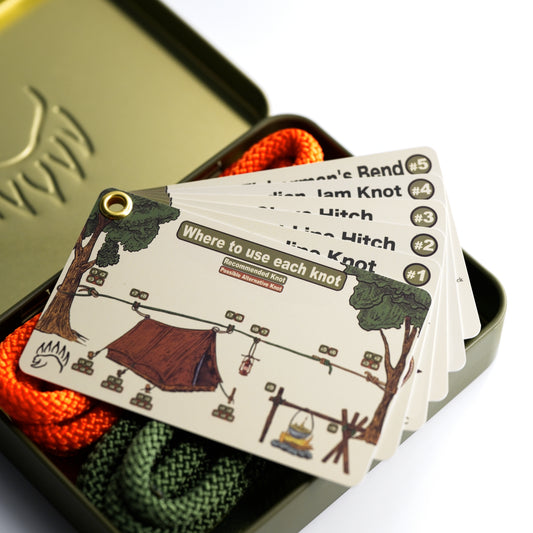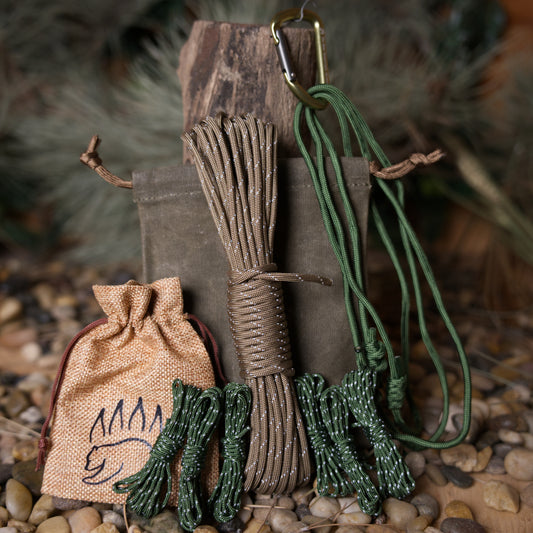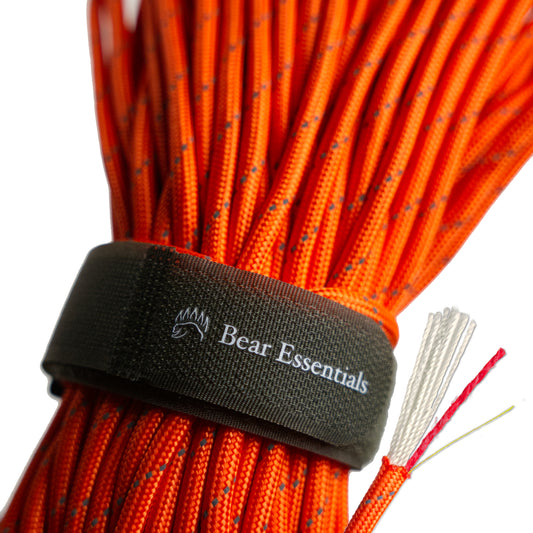How to Tie the Bag Knot (Slipped)
Usage
The Bag Knot (Slipped), also known as the Slipped Miller’s Knot or Slipped Sack Knot, is commonly used to securely tie the neck of bags or sacks, such as grain sacks or camping gear bags, with a quick-release feature. Compared to the standard Bag Knot, which is tighter but harder to untie, this slipped variation allows instant release with a tug, making it ideal for temporary closures.
Why Learn the Bag Knot (Slipped)?
Its quick-release design simplifies bag securing. This knot is a practical choice for anyone needing fast, temporary binding in utility or camping scenarios.
Common Uses
-
Utility:
- Ties the neck of grain sacks, trash bags, or storage bags.
-
Camping:
- Closes gear bags or food sacks with quick-release access.
- Secures tarps or equipment for temporary setups.
ABOK Number
(Ashley Book of Knots)
Other Names
Category
|
Notable Features
- Instant release: Unties with a single pull, ideal for quick access.
- Easy to tie: Simple adaptation of the Bag Knot, quick to learn.
- Versatile use: Suits securing bags, sacks, or light bundles.
- Secure for light loads: Holds well for temporary, moderate tension.
- Minimal rope wear: Reduces stress on the cord with quick untying.
Variations
(No variations mentioned; section left blank.)
Similar Knots
Butcher’s Knot vs. Bag Knot (Slipped)
- Pros: Quick to tie for light binding tasks like meat or parcels.
- Cons: Less adjustable and not quick-release compared to the slipped version.
Constrictor Knot vs. Bag Knot (Slipped)
- Pros: Extremely tight grip for permanent binding.
- Cons: Jams tightly, making it harder to untie than the slipped Bag Knot.
History
The Bag Knot (Slipped), a variation of the Bag Knot, likely originated in agricultural and maritime contexts where securing sacks of grain, flour, or cargo was essential. Referenced in The Ashley Book of Knots (#1242) as the Miller’s Knot or Sack Knot, its slipped adaptation reflects the need for quick access to bag contents. Its use in modern camping and utility tasks highlights its simplicity and effectiveness for temporary binding.
Security Level
The Bag Knot (Slipped) is reliable for securing light to moderate loads, such as bag necks or small bundles, when tied correctly. Its quick-release nature makes it less secure than the standard Bag Knot for prolonged use but ideal for temporary closures. For slippery twine or heavier loads, ensure proper tension or consider a more permanent knot.
Downsides
- Limited security: Less stable for heavy or prolonged loads due to quick-release design.
- Tension-dependent: May loosen if not under consistent pull or if the bag shifts.
Structure
- Wrap the rope or string around the neck of the bag, crossing the working end over the standing part.
- Form a loop by passing the working end under the standing part and around the bag again.
- Instead of passing the working end through the loop, form a bight with the working end and tuck it through the loop.
- Pull the standing part to tighten the knot, ensuring the bight is accessible for quick release.
- To release, tug the bight to unravel the knot instantly.
Pro Tip: Keep the bight long enough for easy pulling during release.
FAQ
Is the Bag Knot (Slipped) strong enough for heavy loads?
It’s suitable for light to moderate loads like bag necks, but not for heavy or critical tasks.
What string works best for the Bag Knot (Slipped)?
Flexible, strong string like nylon or cotton twine ensures easy tying and quick release.
How does the Bag Knot (Slipped) compare to the standard Bag Knot?
It’s faster to untie but less secure for prolonged or heavy binding.
Can the Bag Knot (Slipped) be used for camping gear?
Yes, for securing gear bags or food sacks with quick access, but not for heavy loads.
Why choose the Bag Knot (Slipped) over the Butcher’s Knot?
Its quick-release feature makes it better for temporary closures, though slightly more complex.
Important Notes on Safety
Common failure points include using slick twine or insufficient tension, which can cause slipping. Always verify the knot is used for temporary, non-critical tasks.
Inspect the string for wear or damage before tying.
Ensure the knot is snug and the bag is stable before relying on it.
Practice tying and releasing in low-risk settings first.









